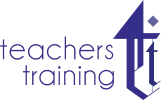Imagine a classroom where crafting lesson plans is a breeze, grading becomes efficient, and every student receives the exact support they need. This isn’t a dream! Artificial intelligence (AI) is rapidly becoming a powerful tool for teachers, making them even more effective educators.
AI Tools: Saving You Time and Effort
- Effortless Lesson Planning: Ditch the stress! Tools like Education Copilot and TeachMate analyse topics and learning goals. They suggest engaging activities, different teaching methods, and even create outlines and reports. This frees you up to focus on the creative spark of lesson planning.
- Beat Writer’s Block: Stuck for lesson ideas? Canva Magic Write uses AI to generate visuals and brainstorming prompts based on your keywords. Need a captivating presentation? This tool can ignite your creativity and help you design visually appealing learning materials.
- Interactive Lessons in Minutes: Platforms like Curipod let you create interactive lessons in a flash. Just enter a topic, and Curipod generates a lesson packed with text, images, polls, and even social-emotional learning activities.
- Video Explainer: Such a tool like invideo AI is designed to produce educational and explanatory videos with the help of explainer video maker, making it perfect for teachers who need to simplify complex concepts into accessible content.
Using AI Tools Wisely: Considerations for Teachers
While AI offers a wealth of benefits, it’s important to approach these tools with a critical eye. Here are some key considerations:
- AI as a Supplement, not a Replacement: AI tools should enhance your teaching practice, not replace it. Your creativity, expertise, and ability to build relationships with students are irreplaceable. Use AI tools to streamline tasks, personalise learning, and gain valuable insights, but remember that the human element remains central to a successful and engaging classroom environment.
- Try Before You Buy: Exploring Your Options Many AI tools offer free trials or demos. Use these opportunities to explore different options and see which ones best suit your teaching style, curriculum requirements, and students’ needs. Don’t be afraid to experiment and find the tools that best suit your unique classroom dynamic.
- Data Privacy and Security: Protecting Student Information When using AI tools with student information, prioritise data privacy and security. Ensure the platforms you choose have robust safeguards in place to protect student data. Look for tools that comply with data privacy regulations such as GDPR (General Data Protection Regulation) and the Data Protection Act 2018.
The Future of AI in Education: A Collaborative Journey
AI is still evolving in the education sector, but its potential to transform teaching and learning is undeniable. As AI tools continue to develop, we can expect to see even more innovative applications that:
- Provide Real-time Feedback: Imagine AI-powered tools that offer immediate feedback on student performance during lessons, allowing for adjustments and personalised support on the fly.
- Personalized Learning Pathways: AI could create individualised learning journeys for each student, dynamically adapting to their progress and learning styles.
- Support for Multilingual Learners: AI-powered tools could offer real-time language translation and support, fostering a more inclusive learning environment for students with diverse language backgrounds.
- Data-Driven Decisions for Educators: AI can analyse vast amounts of student data, providing teachers with valuable insights to inform instructional decisions and track student progress more effectively.
The future of AI in education is a collaborative journey between educators, AI developers, and policymakers. By harnessing the power of AI responsibly and ethically, we can create a future where technology empowers teachers, personalizes learning experiences, and ultimately fosters a love of learning for all students.
Making Assessments Easier and More Meaningful
- Effortless Grading and Clearer Feedback: Grading mountains of essays can be a chore. Tools like Grammarly are a game-changer. This AI-powered writing assistant identifies grammar, punctuation, and style errors, providing instant feedback and boosting writing clarity. Imagine the time saved for personalised feedback on content!
- Plagiarism Detection Made Easy: Maintaining academic integrity is crucial. Turnitin uses AI to compare student assignments against a massive database, helping to identify potential plagiarism. This allows you to address concerns efficiently and guide students towards responsible practices.
Personalizing Learning for Every Student
- Adaptive Learning Platforms: DreamBox Learning takes maths instruction to a whole new level by personalising it for each student. By analysing individual strengths and weaknesses, DreamBox tailors lessons to their specific learning pace and needs, ensuring all students are appropriately challenged and supported.
- Differentiation Made Easy: Some AI tools, like Nearpod suggest different teaching methods based on student data. This empowers you to provide targeted support or enrichment activities to cater to diverse learning styles and abilities within the classroom.
Making Learning More Engaging and Fun
- Interactive Learning with Video: Platforms like Flipgrid allow students to create and share short videos for presentations, discussions, or reflections. AI can be used to analyse student responses in these videos and provide feedback based on predefined parameters. This fosters student ownership of their learning journey.
- Turn Assessments into Fun Challenges: Platforms like Kahoot! and Quizizz leverage AI to create interactive quizzes, polls, and games that make assessments more fun and motivating. This increases engagement and provides valuable data on student understanding.
Supporting Teachers and Helping Them Grow
- AI-Powered Tutors: As AI technology advances, expect to see more sophisticated virtual tutors emerge. These can provide students with additional practice and support outside of class time, particularly helpful for students who need extra help.
- Personalized Professional Development: Platforms like Amplify use AI to analyse teacher data and suggest personalised professional development resources. This allows you to continually sharpen your skills and stay up-to-date on the latest trends, fostering a culture of lifelong learning within the teaching profession.
A Few Things to Keep in Mind
- AI as a Helper, Not a Replacement: AI tools should enhance your teaching, not replace it. Your creativity, expertise, and ability to build relationships with students are irreplaceable. Use AI tools to streamline tasks, personalise learning, and gain valuable insights, but remember that the human element remains central to a successful classroom.
- Try Before You Buy: Many AI tools offer free trials or demos. Take advantage of these opportunities to explore different options and see which ones best suit your teaching style, curriculum requirements, and students’ needs. Don’t be afraid to experiment and find the tools that work best for you.
- Data Privacy and Security: When using AI tools with student information, prioritise data privacy and security. Ensure the platforms you choose have robust safeguards in place to protect student data. Look for tools that comply with data privacy regulations.
The Future of AI in Education: A Collaborative Journey
AI is still evolving in education, but its potential to transform teaching and learning is undeniable. As AI tools continue to develop, we can expect to see even more innovative applications that:
- Provide real-time feedback on student performance during lessons, allowing for adjustments and personalised support on the fly.
- Create personalised learning journeys for each student, dynamically adapting to their progress and learning styles.
- Offer real-time language translation and support for multilingual learners, fostering a more inclusive learning environment.
- Help educators make data-driven decisions to improve instruction and track student progress more effectively. Imagine being able to identify areas where students are struggling as a class or individually, and then use that information to tailor your teaching approach!
Challenges and Considerations
It’s important to acknowledge that AI in education isn’t without its challenges. Here are a few things to keep in mind:
- Bias: AI algorithms can perpetuate existing biases if not carefully designed and monitored. It’s crucial to choose tools that promote diversity and inclusion in the classroom. Look for AI tools that are developed with representative datasets and that have undergone bias testing.
- Equity: Not all schools have equal access to technology or reliable internet connections. As AI tools become more prevalent, it’s important to ensure all students have the opportunity to benefit from them. This may involve seeking out educational equity grants or advocating for increased investment in technology infrastructure within schools.
Human Connection: While AI can be a powerful tool, it can’t replace the human element in education. Teachers play a vital role in fostering relationships with students, inspiring a love of learning, and providing emotional support. AI tools should be seen as supplements to enhance teaching, not replacements for the irreplaceable role of educators.
Ready to Explore AI in Your Classroom?
There are a multitude of AI tools available, each with its own strengths and functionalities. Many platforms offer free trials or demos, so you can experiment and find the tools that best suit your teaching style and students’ needs. Don’t be afraid to embrace the potential of AI and watch your classroom transform!





